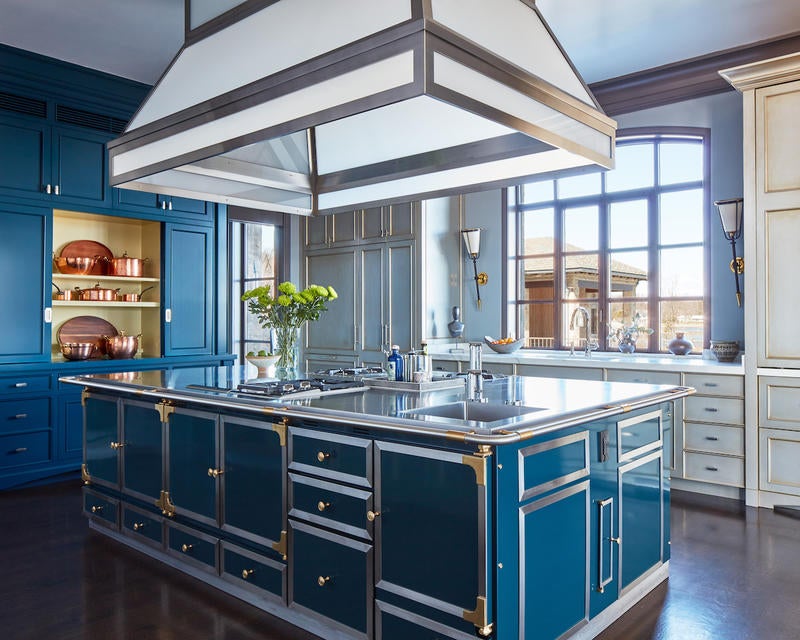The story of the American kitchen is one of slow-rolling conquest. What was once a small room, hidden from view—a place where women toiled in secret—has become a vast, busy place. Families cook, eat, work, fight, laugh and watch movies in their kitchens now. Kitchens are so big, some have multiple islands (oceans have islands) and open-plan kitchens make it difficult to tell where the kitchen ends and the rest of the house begins. In short: Kitchens are winning the battle to become the center of the home (dining rooms are losing, in case you’re curious).
According to a recent study conducted by the National Kitchen & Bath Association, that trend will continue. Kitchens aren’t getting smaller. But they are changing.
The “Living Impacts Design” study, based on a survey of 750 NKBA members, identified a few key findings. One is that Americans still very much see the kitchen as a hub of activity. Eighty-seven percent favored open plans, with as much visibility as possible. The study also suggests that islands will be getting larger and more explicitly multifunctional, and identified a desire for more charging outlets, to support working from home.
However, Americans also want their kitchens to get simpler. Eighty percent of respondents said that minimizing clutter with targeted storage is a critical design need. Sixty-one percent wanted spaces specifically designed for easy meal prep—a takeaway that seems obvious, but it’s easy to forget that as the kitchen has gotten bigger, it has become more difficult to create the kind of tight, convenient fridge-stove-sink triangle that once defined the space. Increasingly, we want big-kitchen energy with small-kitchen convenience.
The study suggests that bells, whistles and gadgets for their own sake are out, while things that tangibly improve our lives (better storage, commercial finishes for easy cleaning) are in. “People need an escape from a chaotic world, and their home provides that safe haven,” says Tricia Zach, head of research for NKBA. “Our lives are bursting with responsibilities and commitments. We’re tasked to do more with less time, and this research provides ... insights to the specific tools and solutions people need.”
The study broke down respondents by life stage, leading to some interesting if not entirely unexpected results. For example, millennials with kids place a greater importance on easy meal prep than millennials without kids. Less obvious: Millennials put more priority on a connection to nature in their kitchens, while Gen X and boomers give more weight to pure comfort (we’ll have to wait a few years to find out what Gen Z wants).
Across generations, health and wellness emerged as a priority. Forty-eight percent said they wanted kitchens to help them be more health-conscious through amenities like larger sinks and refrigerators for washing and storing fresh produce. Recycling and composting stations are also on the rise.
In short: Don’t expect the kitchen to cede any space to other rooms in the house. But they’re on track to get simpler, healthier and smarter.
Homepage photo: A 2014 kitchen by St. Charles | Courtesy of St. Charles Kitchens




























